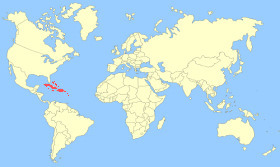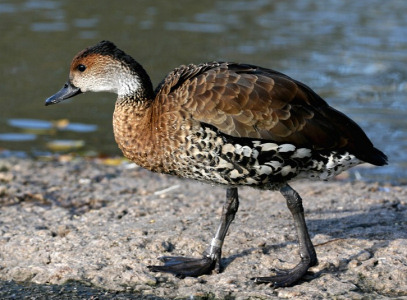Appearance: - The West Indian Whistling Duck is larger and plumper than other Whistling Ducks. It has a dark brown head, with black crown, and nape, chin and throat are pale buff, lower neck is speckled with dark brown, upperparts and breast are dark brown, flanks are pale buff, underparts are heavily spotted, the beak is black, and feet and legs are greenish-black. Boths sexes look similar.
Size: - Typical Adult is 48-58cm (19-23in).
Food: - Mainly aquatic vegetation, fruit of Royal Palm trees, and will graze on agricultural land.
Habitat/Range: - Wetlands, and swamps throughout the West Indies.

 Breeding Habitat/Resident,
Breeding Habitat/Resident,  Migration or Winter Area.
Migration or Winter Area.Breeding Season: - June to October.
Eggs: - 10-14 (creamy-white colour).
Notes: - The West Indian Whistling Duck is also sometimes called the West Indian Tree Duck. They can often be found perching in trees and they feed during the night. Due to hunting and wetland draining these ducks are currently in decline and are currently considered vulnerable.
Conservation status (IUCN 3.1):
Vulnerable.
Classification: - Family: Anatidae,
Subfamily: Dendrocygninae,
Genus: Dendrocygna.





























